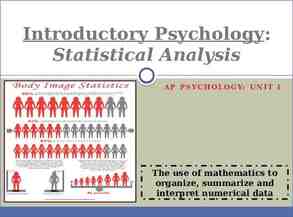TRID August 1, 2015 Disclosure Pages of LE and CD Venessa Snell
23 Slides949.57 KB
TRID August 1, 2015 Disclosure Pages of LE and CD Venessa Snell
LE Page 3: Other Considerations 1. 2. 3. 4. 5. 6. 7. 8. Appraisal Assumption Homeowner’s Insurance Late Payment Refinance Servicing Liability after Foreclosure (Refinance) New Construction
LE Page 3 : Appraisal A. Originally separate disclosure; 1026.37(m)(1) Appraisal The required verbiage as implemented in Regulation B CFR part 1002 (ECOA) and this part, must be provided on page 3 of the Loan Estimate (LE) under Other Considerations section and titled “Appraisal”: 1. The creditor may order an appraisal to determine the value of the property identified and may charge the consumer for that appraisal; 2. The creditor will promptly provide the consumer a copy of any appraisal, even if the transaction is not consummated; and 3. The consumer may choose to pay for an additional appraisal of the property for the consumer's use. B. If loan is not subject to 1026.37 or 1026.38, and is a 1st lien the standard ECOA disclosure will still be required
LE Page 3 : Assumption A. Original Placement on the Truth in Lending (TIL); 1026.37(m)(2) Assumption. A statement of whether a subsequent purchaser of the property may be permitted to assume the remaining loan obligation on its original terms, labeled “Assumption.” Commentary 2. Original terms. For purposes of § 1026.37(m)(2), the imposition of an assumption fee is not a departure from the original terms of the obligation but a modification of the legal obligation, such as a change in the contract interest rate, represents a departure from the original terms. B. Will vary based on Agency, Creditor and product.
LE Page 3 : Insurance A. Original Placement on the Truth in Lending (TIL); 1026.37(m)(3) Homeowner’s insurance. 1. Optional disclosure. Section 1026.37(m) (3) provides that creditors may, but are not required to, disclose a statement of whether homeowner’s insurance is required on the property and whether the consumer may choose the insurance provider, labeled “Homeowner’s Insurance.” 2. Relation to the finance charge. Section 1026.4(d)(2) describes the conditions under which a creditor may exclude premiums for homeowner’s insurance from the finance charge. For transactions subject to § 1026.19(e), a creditor satisfies § 1026.4(d)(2)(i) by disclosing the statement described in § 1026.37(m)(3). B. Though disclosure is optional, written notice must be present to meet requirements of TIL to exclude premiums from the finance charge.
LE Page 3 : Late Payment A. Original Placement on the Truth in Lending (TIL); 1026.37(m)(4) Late payment. A statement detailing any charge that may be imposed for a late payment, stated as a dollar amount or percentage charge of the late payment amount, and the number of days that a payment must be late to trigger the late payment fee, labeled “Late Payment.” Commentary (2.) Applicability of State law. Many State laws authorize the calculation of late charges as either a percentage of the delinquent payment amount or a specified dollar amount, and permit the imposition of the lesser or greater of the two calculations. The language provided in the disclosure may reflect the requirements and alternatives allowed under State law. B. Will vary based on Agency, and State.
LE Page 3 : Refinance A. Original Placement on the Truth in Lending (TIL); 1026.37(m)(5) Refinance. The following statement, labeled “Refinance”: “Refinancing this loan will depend on your future financial situation, the property value, and market conditions. You may not be able to refinance this loan.” B. Notice came about with issues regarding defaults on products that consumers were incapable of refinancing due to credit issues, and consumers lack of understanding
LE Page 3 : Servicing A. Originally a separate disclosure; 1026.37(m)(6) Servicing. A statement of whether the creditor intends to service the loan or transfer the loan to another servicer, labeled “Servicing.” Commentary 1. Creditor’s intent. Section 1026.37(m) (6) requires the creditor to disclose whether it intends to service the loan directly or transfer servicing to another servicer after consummation. A creditor complies with § 1026.37(m)(6) if the disclosure reflects the creditor’s intent at the time the Loan Estimate is issued. B. Previous versions of disclosure were more concrete, with percentage of transfers indicated.
LE Page 3 : Liability after Foreclosure A. On Loan Estimate for Refinance only; 1026.37(m)(7) Liability after foreclosure. If the purpose of the credit transaction is to refinance an extension of credit as described in paragraph (a)(9)(ii) of this section, a brief statement that certain State law protections against liability for any deficiency after foreclosure may be lost, the potential consequences of the loss of such protections, and a statement that the consumer should consult an attorney for additional information, B. Direct notification on LE for refinance transactions and all CDs; Up to lender to verify if the specific state of the subject property has Anti-Deficiency Laws and/or under what terms it allows for collection of remaining balance after foreclosure action.
LE Page 3: New Construction A. Originally a separate disclosure; 1026.37(m)(8) Construction loans. In transactions involving new construction, where the creditor reasonably expects that settlement will occur more than 60 days after the provision of the loan estimate, at the creditor's option, a clear and conspicuous statement that the creditor may issue a revised disclosure any time prior to 60 days before consummation, pursuant to § 1026.19(e) (3)(iv)(F). Commentary 1. Clear and conspicuous statement regarding redisclosure for construction loans.
CD Page 4: Additional Loan Information 1. 2. 3. 4. 5. 6. 7. Assumption Demand Feature Late Payment Negative Amortization Partial Payments Security Interest Escrow Account AP and AIR Tables will appear when applicable
CD Page 4: Additional Loan Information Assumption: LE Page 3 Late Payment: LE Page 3
CD Page 4:Demand Feature A. Originally from TIL; 1026.38(l)(2) cross-referenced to; 1026.18(i)(2) Covered demand features. The type of demand feature triggering the disclosures required by §1026.18(i) includes only those demand features contemplated by the parties as part of the legal obligation. For example, this provision does not apply to transactions that convert to a demand status as a result of the consumer's default. A dueon-sale clause is not considered a demand feature. B. A demand feature refers to a clause in which the lender can demand repayment in full of the debt at any time deemed within. For example; -If interest rates rise -declining market conditions -Loans Made to executive officers may include demand features for payment when governed by Regulation O.
CD Page 4: Negative Amortization A. Originally from TIL; 1026.38(l)(4) Negative amortization. Under the subheading “Negative Amortization (Increase in Loan Amount),” a statement of whether the regular periodic payments may cause the principal balance to increase. B. Summary of (i)&(ii) If the regular periodic payments, or payment option chosen by borrower do not cover all of the interest due, the creditor must provide a statement that the principal balance will increase, such balance will likely become larger than the original loan amount, and increases in such balance lower the consumer's equity in the property.
CD Page 4 : Partial Payments A. New Disclosure; 1026.38(l)(5) Partial payment policy Under the subheading “Partial Payments”: Summary; (i) If periodic payments that are less than the full amount due are accepted, and applied to the consumer's loan; (ii) If periodic payments that are less than the full amount due are accepted but not applied to a consumer's loan until the consumer pays the remainder of the full amount due (iii) If periodic payments that are less than the full amount due are not accepted, and (iv) A statement that, if the loan is sold, the new creditor, using the term “lender,” may have a different policy.
CD Page 4: Security Interest A. Originally from TIL; 1026.38(l)(6) Security interest. Under the subheading “Security Interest,” a statement that the consumer is granting a security interest in the property securing the transaction, the property address including a zip code, and a statement that the consumer may lose the property if the consumer does not make the required payments or satisfy other requirements under the legal obligation. B. Commentary indicates allowance of alternate address descriptions for properties not assigned a standard address including; legal, or lot & block descriptions; and C. Personal property and additional collateral may also be listed in this section with allowance for an addendum if adequate space is not provided on page. “The creditor may use one addendum to disclose the personal property under § 1026.38(a)(3)(vi) and (l)(6).”
CD Page 4: Escrow Account A. From GFE and Escrow disclosures , but now expanded; 38(l)(7) Escrow account. 1. Will have an escrow account Estimated total Escrowed costs over the first year. Estimated total of Non-Escrowed costs over the first year Initial Escrow Payment- Cushion paid at closing Monthly Escrow Payment 2. Will not have an escrow account Declined by borrower Not offered by lender Estimated total required to be paid directly by the consumer over the first year B. In the future- Statement must include information on how the consumer’s escrow costs may change due to property cost changes. Indication that the consumer may cancel escrow accounts in the future, and responsibility for direct payment. Additionally, the repercussion for failure to pay escrow payment.
CD Page 5: Other Information; Other Disclosures 1. Appraisal Disclosure-Final 2. Contract Details 3. Liability after Foreclosure 4. Refinance 5. Tax Deductions
CD Page 5: Appraisal A. Previously separate disclosure; (descriptions added) 1026.38(p)(1) Appraisal. For transactions subject to 15 U.S.C. 1639h(high-risk mortgage appraisal requirements) or 1691(e)(Civil Liability and Good Faith Compliance), as implemented in this part or Regulation B, 12 CFR part 1002 (ECOA), respectively, under the subheading “Appraisal,” that: (i) If there was an appraisal of the property in connection with the loan, the creditor is required to provide the consumer with a copy at no additional cost to the consumer at least three days prior to consummation; and (ii) If the consumer has not yet received a copy of the appraisal, the consumer should contact the creditor using the information disclosed pursuant to paragraph (r) of this section.
CD Page 5: Contract Details A. New disclosure based on previous concept; 1026.38(p)(2) Contract details. A statement that the consumer should refer to the appropriate loan document and security instrument for information about nonpayment, what constitutes a default under the legal obligation, circumstances under which the creditor may accelerate the maturity of the obligation, and prepayment rebates and penalties, under the subheading “Contract Details.”
CD Page 5: Liability After Foreclosure A. Same disclosure as noted on page 4 of Loan Estimate; however applicable to all covered transactions; Commentary 102638(p)(3) Liability after foreclosure. 1. State law requirements. If the creditor forecloses on the property and the proceeds of the foreclosure sale are less than the unpaid balance on the loan, whether the consumer has continued or additional responsibility for the loan balance after foreclosure, and the conditions under which liability occurs, will vary by State. If the applicable State law affords any type of protection, other than a statute of limitations that only limits the timeframe in which a creditor may seek redress, § 1026.38(p)(3) requires a statement that State law may protect the consumer from liability for the unpaid balance.
CD Page 5: Refinance A. Same disclosure as noted on page 4 of Loan Estimate; 1026.38(p)(4) 1026.37(m)(5) Refinance. The following statement, labeled “Refinance”: “Refinancing this loan will depend on your future financial situation, the property value, and market conditions. You may not be able to refinance this loan.”
CD Page 5: Tax Deductions A. New Disclosure; 1026.38(p)(5) Tax deductions. Under the subheading “Tax Deductions,” a statement that, if the extension of credit exceeds the fair market value of the property, the interest on the portion of the credit extension that is greater than the fair market value of the property is not tax deductible for Federal income tax purposes and a statement that the consumer should consult a tax adviser for further information.




























